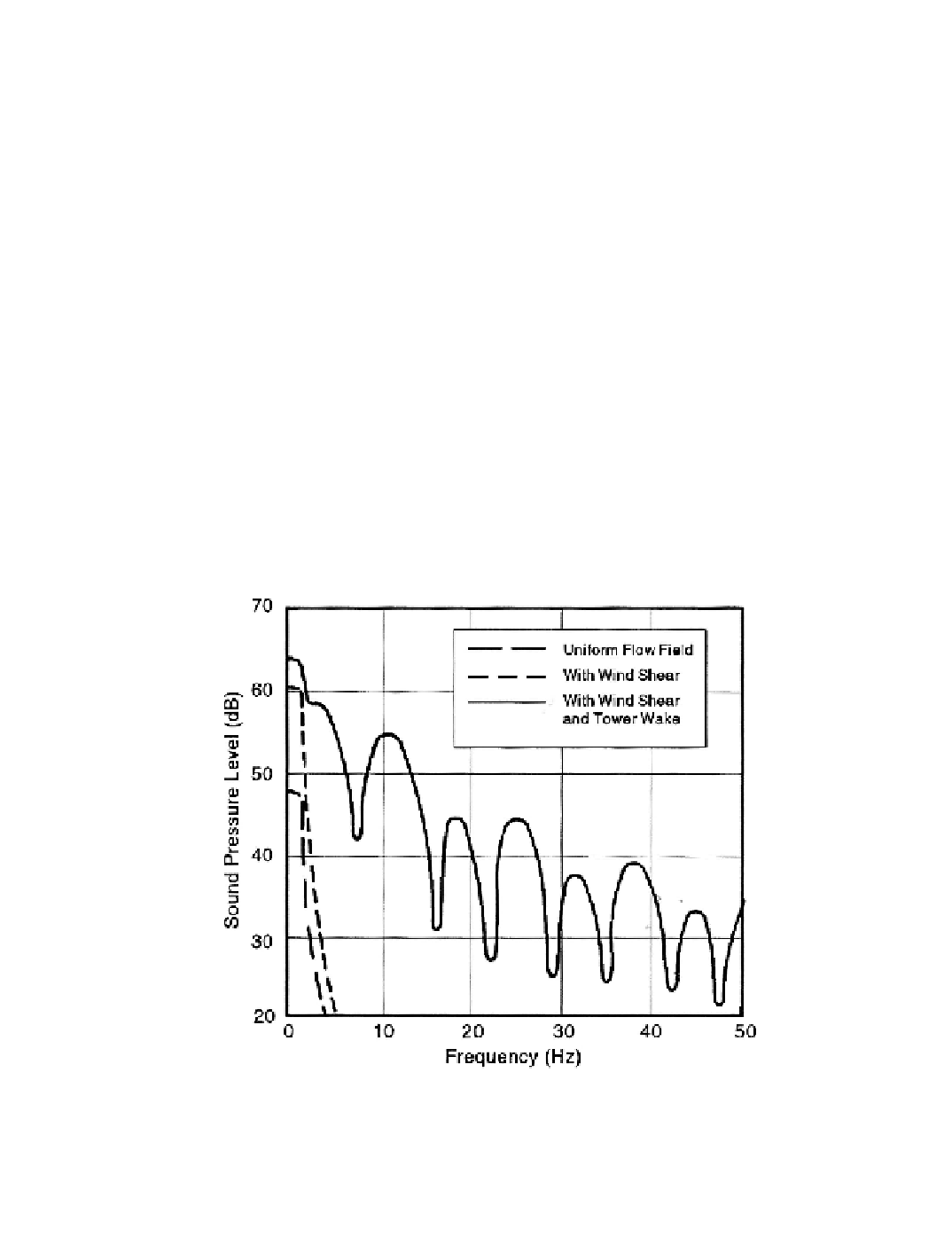Environmental Engineering Reference
In-Depth Information
Figure 7-12 compares calculated and measured sound pressure levels of the first 50
rotational harmonics for the Mod-1 downwind rotor. The calculations predict the maximum
levels quite well, as well as the general shape of the spectrum. Other calculations [Viterna
1981] suggest that the maximum levels of the rotational harmonics occur in the upwind and
downwind directions, while the minimum levels occur in the crosswind directions. Note
that the calculation procedure presented in Equation (7-1) has been validated for the Mod-1
and WTS-4 machines. Alternative methods for predicting the magnitude of rotational
harmonics are discussed, and pertinent results are presented in Kelley
et al.
[1985]; Meijer
and Lindblad [1983]; Green and Hubbard [1980]; Martinez, Widnall, and Harris [1982];
George [1978]; and Lowson [1970].
Calculations made with Equation (7-2) were compared with those for a nonuniform
wind inflow, and the results are shown in Figure 7-13. For a uniform flow field, the
fundamental rotational harmonic is relatively strong, but all higher harmonics are weak. A
similar result is obtained when the rotor operates in a shear flow that produces a once-per-
revolution variation of inflow velocity at each blade. When a tower wake deficit is added,
however, the levels of the higher frequencies are greatly enhanced.
These results suggest that both configuration and siting effects are significant in the
rotational noise generation of wind turbines. For example, the tower wake of both VAWTs
and downwind-rotor HAWTs can greatly enhance the strength of the rotational noise
harmonics. Other deviations in wind inflow from a uniform velocity over the disk may also
enhance the strength of the rotational harmonics for all rotor configurations. Flow
deviations may be caused by the vertical wind velocity gradient in the earth's boundary
layer and may be exaggerated by atmospheric turbulence or terrain features that can impose
additional velocity gradients on the inflow.
Figure 7-13. Calculated envelopes of rotational noise spectra for various wind inflow
conditions 945 m downwind of the Mod-1 HAWT.
(rotor diameter = 61 m, wind speed
= 13.4 m/s, power output = 1,500 kW) [Viterna 1981]

Search WWH ::

Custom Search